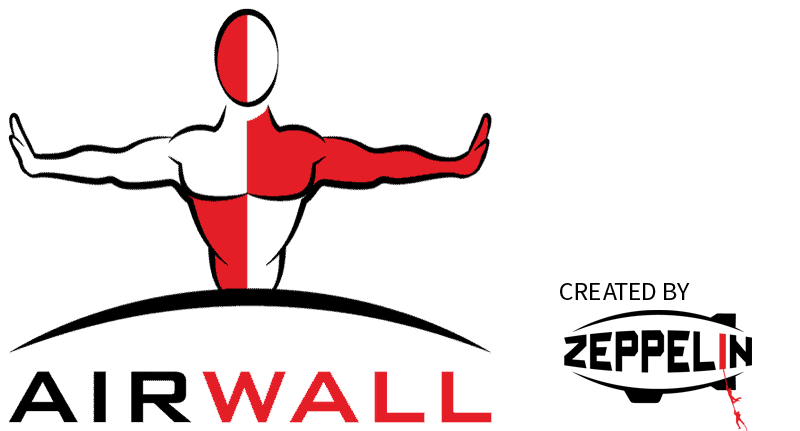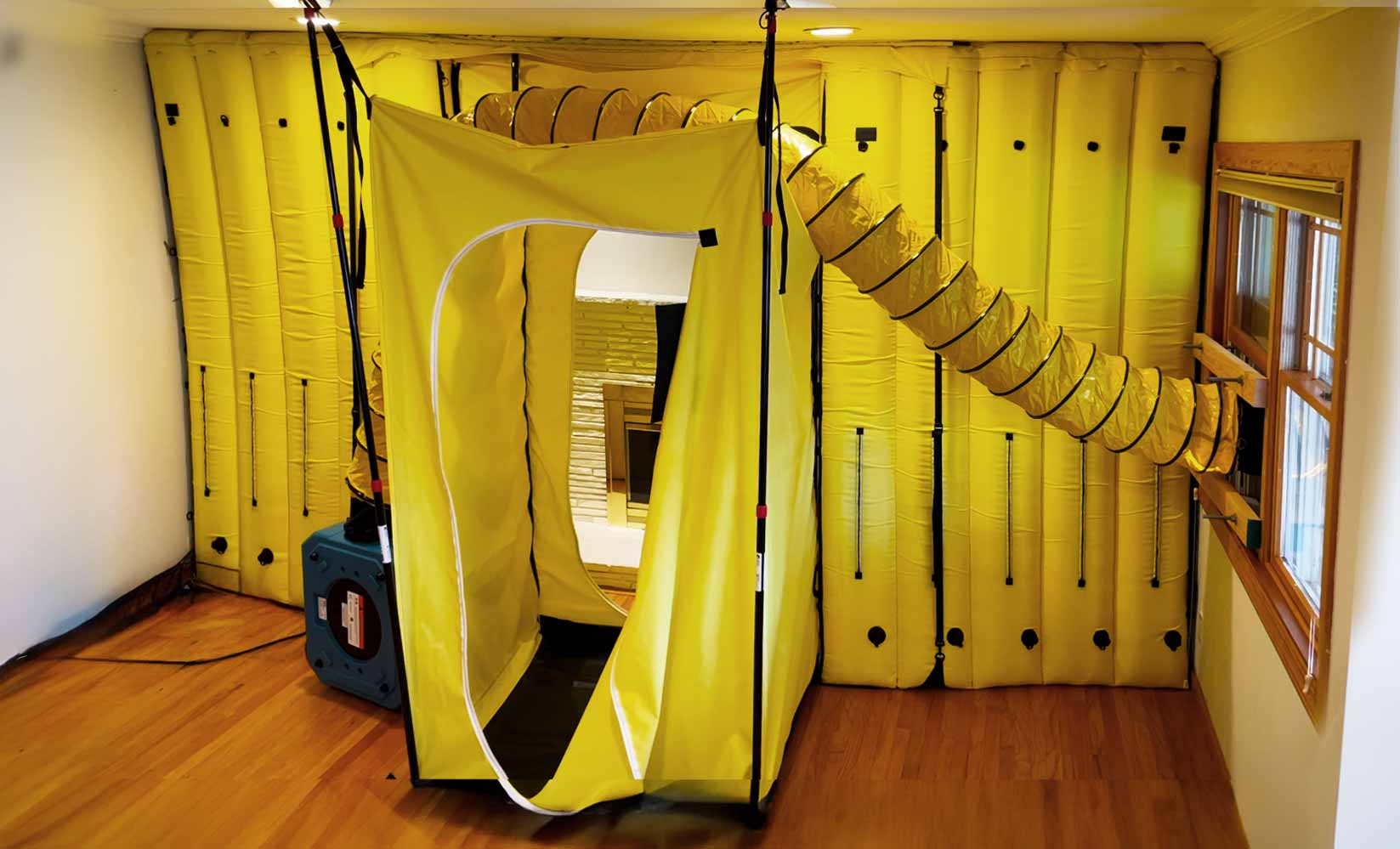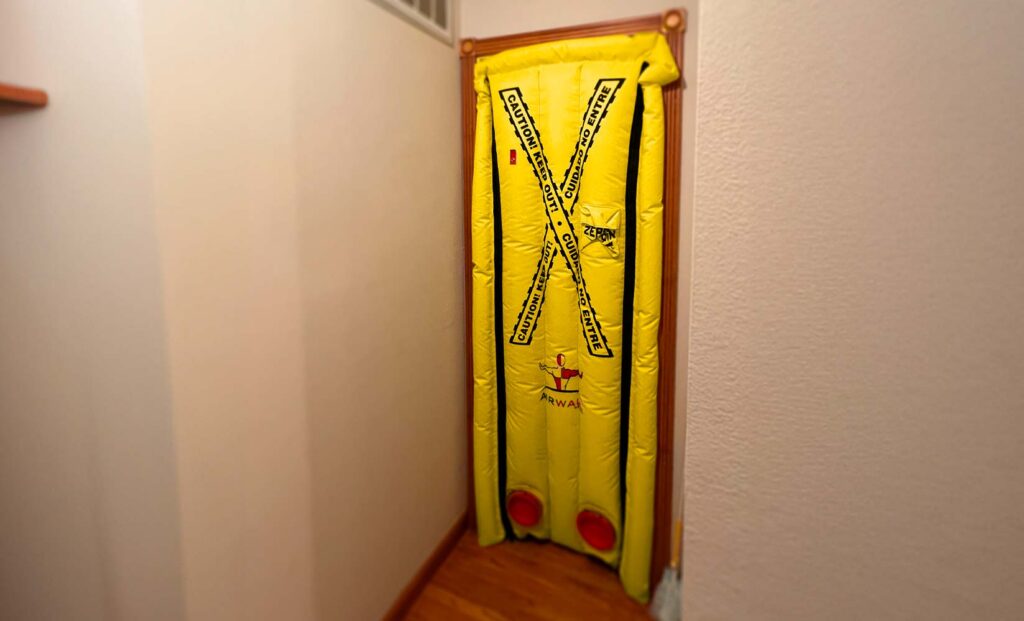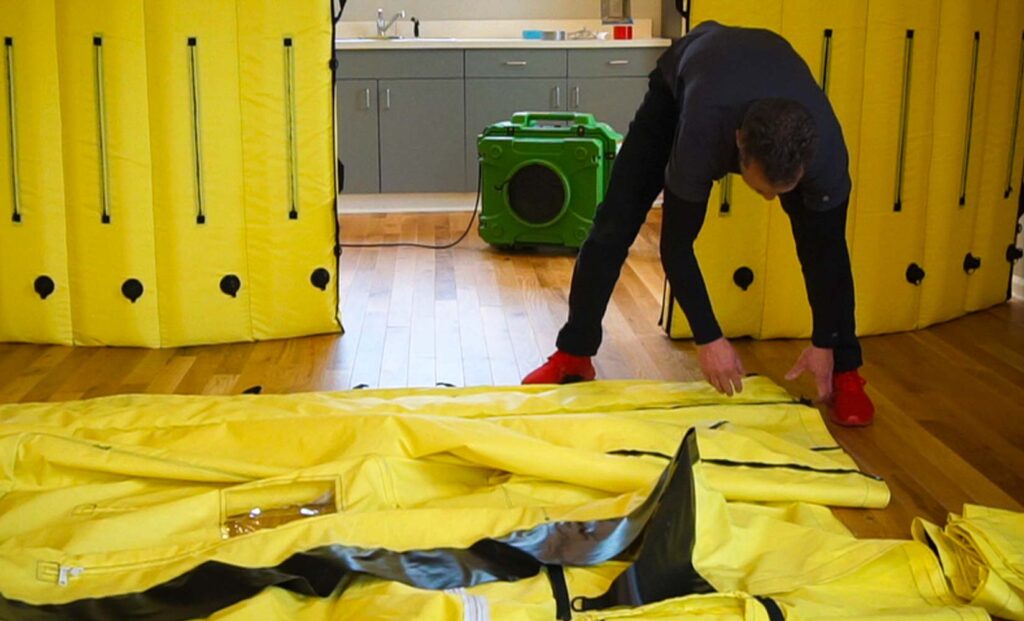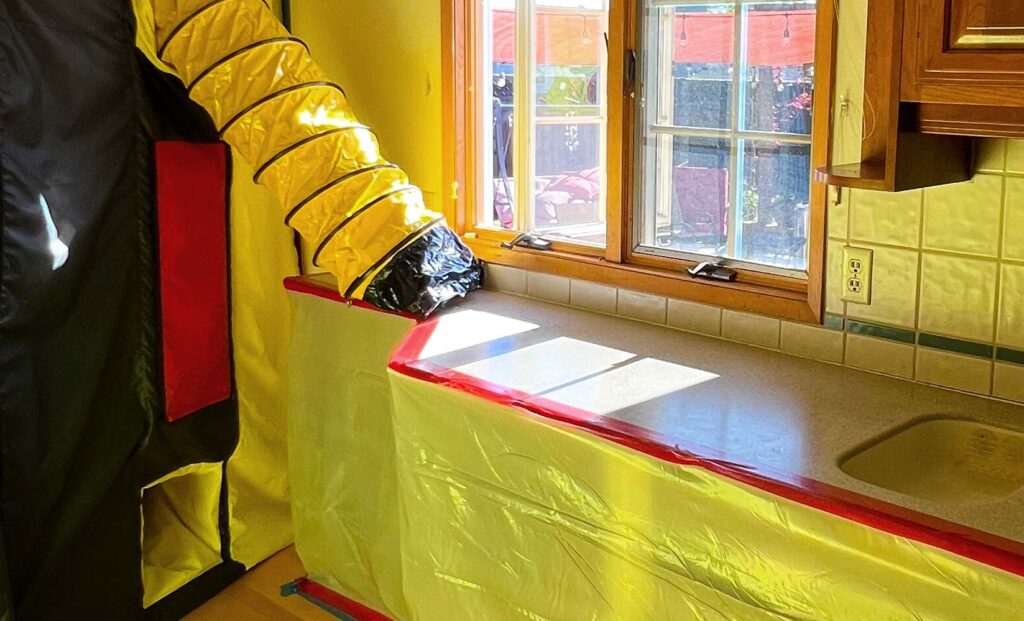When an older building needs restoration or mold remediation, the challenge isn’t just removing the problem—it’s stopping it from spreading. Whether it’s mold, asbestos, dust, or other hazardous particles, these contaminants become airborne and move to other parts of the structure if not handled correctly. That’s where proper containment during remediation becomes critical.
Using tools like AIRWALL containment barriers makes a big difference in the success of your project. In this blog, we break down why containment is important in restoration, what it does, and how it protects your property, your team, and your investment.
What Is Proper Containment in Construction?
Proper containment in construction refers to the process of isolating a work area to prevent the spread of harmful particles during remediation or repair. Think of it as putting up a strong, temporary wall that keeps dangerous substances locked in one space while work gets done.
Containment isn’t just about sealing things off. It involves air management, entry control, and visibility solutions that ensure safety and efficiency. One standout system used by pros is the AIRWALL. These reusable inflatable barriers are fast to set up, easy to move, and strong enough to handle real-world job sites.
Why Containment Matters in Mold and Hazard Remediation
One of the main reasons proper mold containment is essential is that mold spores are tiny and travel easily through vents, windows, and doorways. If stirred up during cleanup, they float through the air and settle in new areas, causing fresh mold problems down the line.
Containment systems, like AIRWALL, work to block these escape routes. According to the Restoration Industry Association, inadequate containment leads to recurring contamination and higher cleanup costs.
The Key Benefits of AIRWALL and Containment Barriers
If you’re considering a restoration project, here are the biggest benefits of using containment systems:
- Prevents Spread of Contaminants: Mold, dust, and asbestos particles stay where they belong, keeping the rest of your building safe.
- Supports Faster Cleanup: With particles locked into one area, crews work more efficiently and avoid backtracking to clean newly affected spaces.
- Improves Safety for Workers and Occupants: Limiting exposure to dangerous materials helps protect health and reduces liability.
- Boosts Insurance Compliance: Insurers want proof that mitigation efforts are being done correctly. Containment barriers are one sign you’re taking the right steps.
- Reduces Downtime: Especially for commercial properties, keeping parts of a building open while work continues in isolated areas helps business operations stay on track.
- Secures the Work Zone: Inflatable containment barriers help block unauthorized access to vulnerable areas, preventing accidents and vandalism.
Real-World Uses of Proper Containment Systems
In cities like Los Gatos, CA, where many buildings have historic or older features, remediation often requires careful planning. Using containment during remediation ensures the project meets local safety regulations while preserving the original structure as much as possible.
Reusable options like AIRWALL offer flexibility for multiple projects. They’re especially helpful for restoration professionals who need to move quickly between jobs while still maintaining industry standards.
Why Proper Containment Reflects Professionalism
Clients notice when a team shows up with the right tools. Using quality containment solutions demonstrates professionalism and builds trust. It sends the message that you’re serious about protecting the building, the people in it, and the final results.
For anyone hiring a contractor or considering a DIY project, seeing that proper containment is part of the plan should be a must-have. It reflects expertise and reduces risk.
FAQ: Proper Containment for Restoration Projects
Q: What does proper containment involve?
A: It includes barriers, air filtration, and entry control to stop particles from spreading.
Q: Why should I care about containment during remediation?
A: It protects your health, your building, and your budget by preventing cross-contamination.
Q: Are AIRWALL barriers reusable?
A: Yes, AIRWALL systems are designed to be durable and reusable across multiple projects.
Q: How does containment help with insurance claims?
A: It shows you’ve taken the necessary steps to secure and protect your property, which supports your case.
Q: Can containment be used in occupied buildings?
A: Yes. Containment zones help keep the work area isolated so the rest of the building remains operational.
Containment Is Not Optional—It’s Essential
Whether you’re tackling a small mold issue or a full-scale building renovation, proper containment in construction and restoration isn’t just a “nice to have.” It’s a must.
Systems like AIRWALL make it easier, faster, and safer to get the job done right. If you want a cleaner, safer, and more efficient restoration process, don’t skip the containment.
